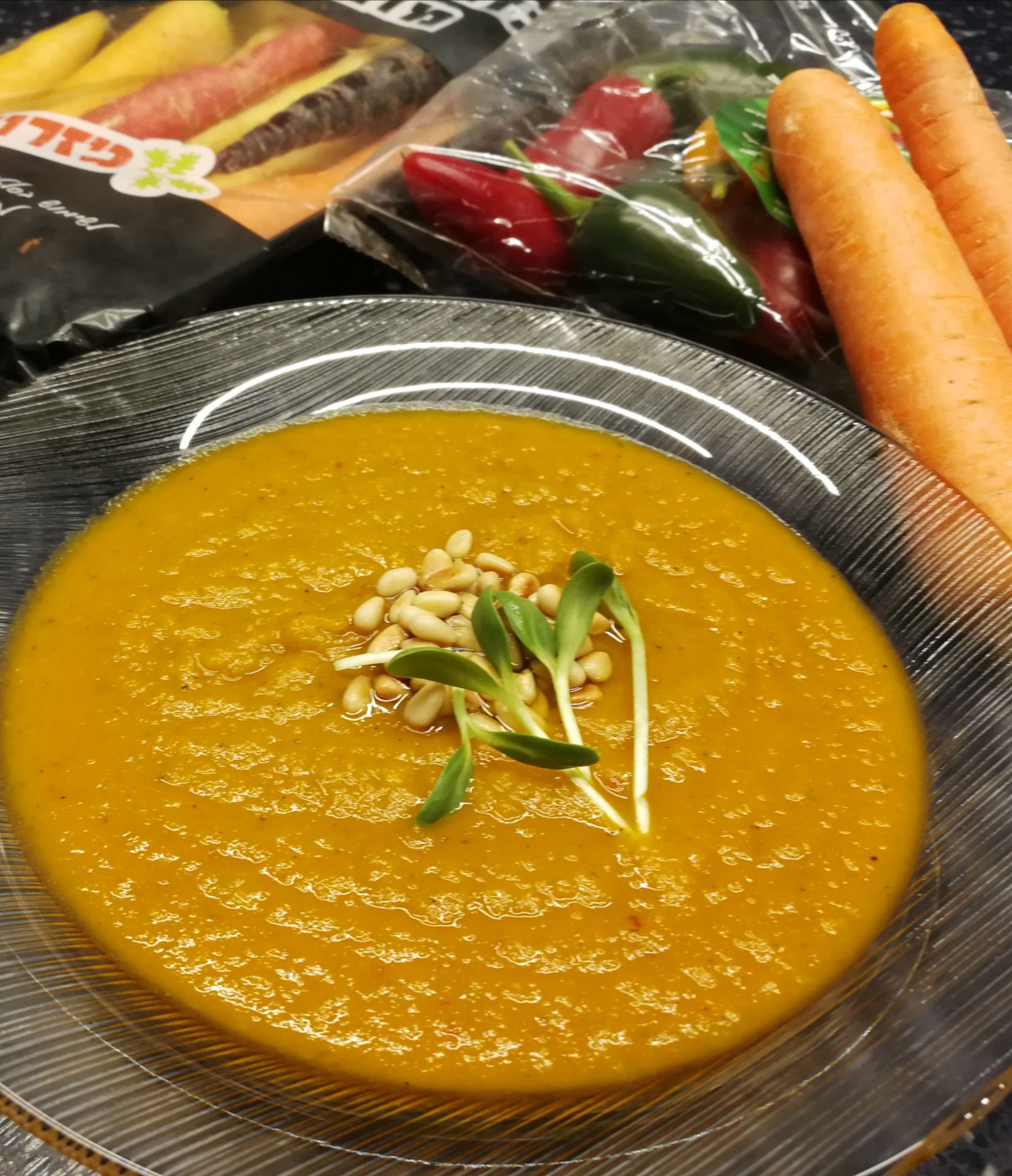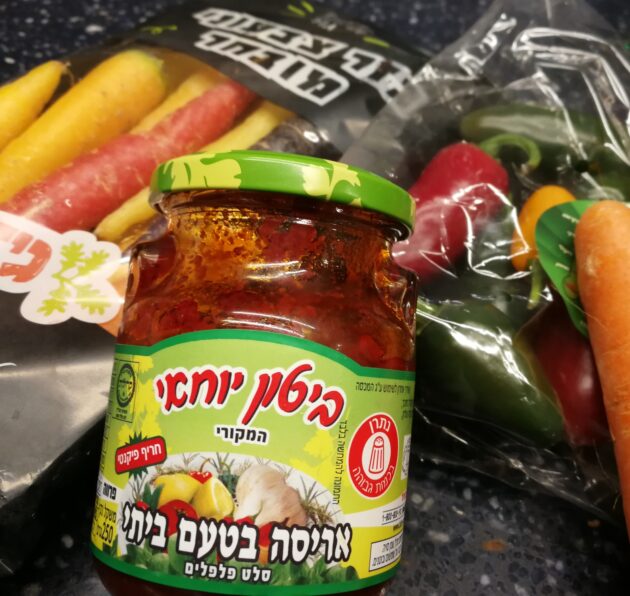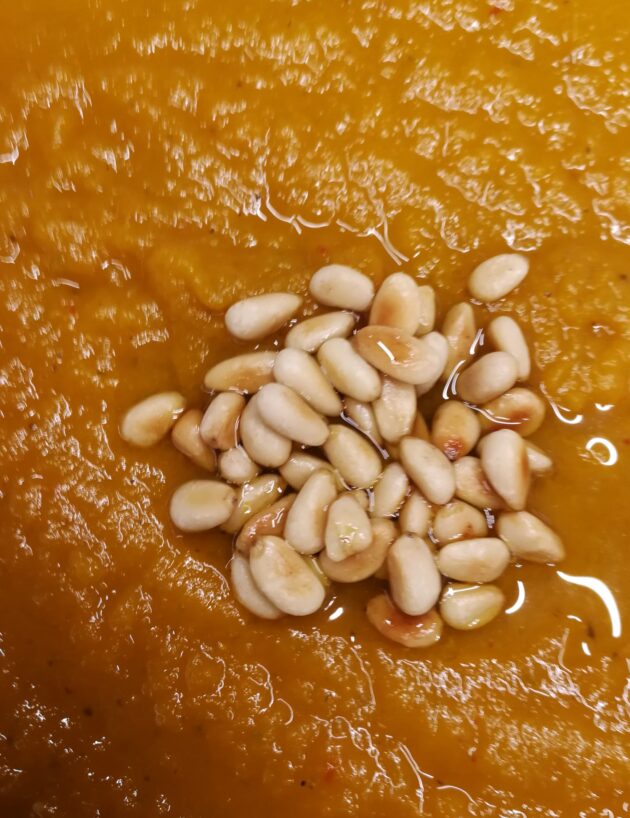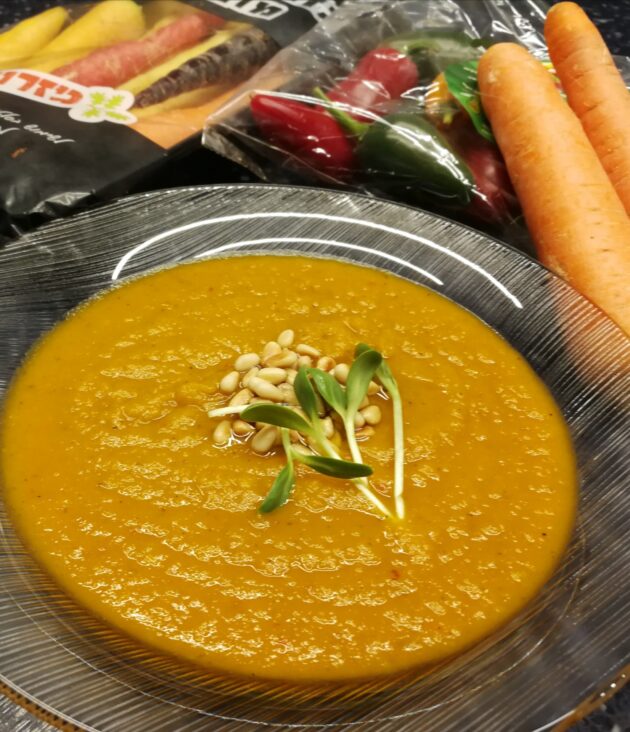There is nothing quite like a good thick satisfying soup on a cold winter’s evening; that’s the general sentiment expressed by most regarding soups. Personally I have never been a soup man, always party to the belief that soup just takes up valuable and limited space in your ‘cockles’ when you could be eating real food. But as I have grown older and my teeth have become more like hens’ teeth, I can almost appreciate food that doesn’t require significant effort regarding mastication.
Carrots, which originally hail from Central Asia, actually from Iran/Afghanistan, have been slowly developed around the world over time to reduce bitterness, increase sweetness, remove woodiness and to change the carrot’s colours. It is said that the carrot in its original forms was purple, yellow, red and white and often one colour on the outside and another within. The Dutch apparently developed the orange carrot that we all know today to honour William of Orange and the Dutch flag. ‘Willy’ or ‘Vilhelm’ to his friends was the king of Holland, Zeeland and later the king of the British Isles during the seventeenth century.
Who would have thought that something as dear to Walt Disney’s Bugs Bunny as carrots, would have originated in the mountainous wasteland known today as Afghanistan, a destination that is almost as far from us in our imaginations as the moon and which counts amongst one of its major exports raw opium and these days, US forces, their interpreters and dependents.
Spicy harissa, the other important ingredient in this soup, finds its origins in the Maghreb of North Africa from Morocco to Tunisia. There are different variations of harissa, the most popular in Israel being Moroccan harissa, as they happen to be the largest Arab Jewish ethnic immigrant group, who came from the Maghreb to Israel as refugees after the creation of the State of Israel in 1948.
Harissa gets its name from Arabic and Hebrew; harissa in both languages means to crush/destroy/mash. Most people aren’t aware, but Arabic and Hebrew share a significant number of words in common. The distinction between the two languages can be found mostly in pronunciation and intonation. Harissa is made by crushing dry peppers, hot or sweet depending on the desired outcome, and adding spices, flavours and oil.
Carrot, Ginger and Harissa Soup
Ingredients:
- Carrots x 6-8 peeled, top and tailed and cut into half inch pieces.
- 1 inch knob of ginger, peeled and grated
- Onion x 1, peeled and diced
- Celery x 2-3 stalks, peeled and diced
- Spicy harissa x 1-2 teaspoons depending on desired heat
- Cumin x 1 teaspoon
- Zest and juice of one lemon
- Salt and pepper to taste
- Chicken or vegetable stock or water x 1.5 litre
- Toasted pine nuts x 50 gram
- Olive oil x good shluk
- Parsley x small bunch washed and stalks removed for decoration.
Method:
Dry toast pine nuts in pan on low heat, ensuring they brown but don’t burn. Remove from pan into a small bowl and set aside.
In a double bottomed pot add a ‘shluk’ of olive oil and when hot, add onions, reduce heat and stir until onions clarify. Add ginger, garlic, cumin and 1 teaspoon of spicy harissa, a pinch of salt and pepper and stir for a minute or two.
Add carrots and celery, stir to sweat out their bitterness; after a minute or two, add the vegetable or chicken stock or water and bring to a boil.
Reduce heat and cook/simmer for twenty minutes. Check carrots are soft, add zest and lemon juice and taste for ‘heat’. If not spicy enough, add another half or teaspoon of harissa. If it has enough bite leave it as is. Taste for salt and pepper, let cool for five minutes and then grind till smooth.
I always remove a bit of the liquid before grinding so there is no chance the soup will be too watery. If it is too thick I return the liquids. For serving, ladle a nice portion into a soup bowl and add a nice pinch of toasted pine nuts to the centre of the plate, drizzle a little olive oil over the nuts and add a few sprigs of parsley. At this point, it is ready to consume and be added to the ‘cockles’.
“Sachten”. Enjoy in Arabic.
Next week: the super tasty Italian dish chicken arrabiata on a bed of fresco farfalle pasta.
If you enjoyed this recipe why not share it with your friends via social media or e-mail? If you want a copy of your own select the print option at the top of the page.




